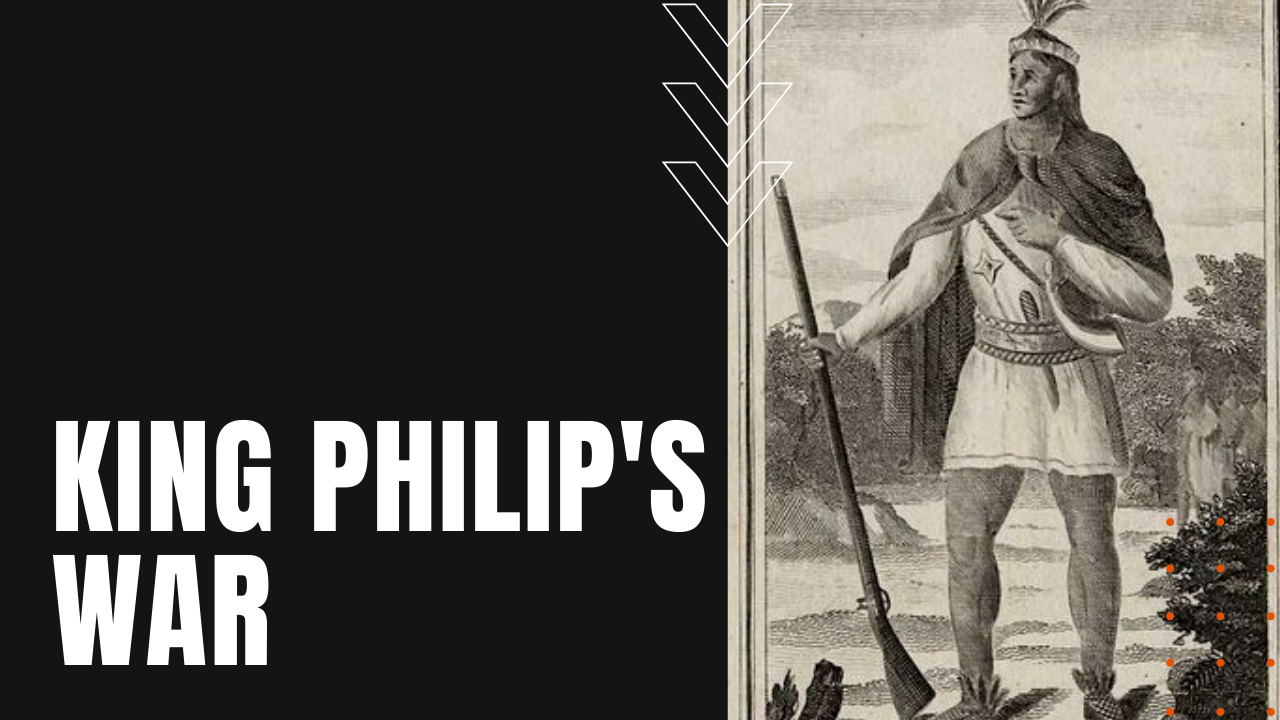King Philip’s War

What Caused King Philip’s War?
Following the Pequot Indian War of 1636, the fledgling British colonies formed a military alliance against further Indian aggression, and although Wampanoag chief Massasoit’s son Metacom—known as Philip—negotiated a peace treaty at Plymouth Plantation, but continued colonial expansion onto Indian lands led to what is now known as King Philip’s War.
King Philip’s Plan
Following the 1675 deaths of Chief Massasoit and his eldest son Wamsutta, Philip came to power over the Wampanoag people, and after Christian Indian John Sassamon warned the colonists that Philip was planning an attack, Sassamon’s murdered body was discovered in an icy pond.
Three Wampanoag men were hanged for the crime on June 8th, 1675, leading to Philip’s bloody attack on the Swansea colony in Massachusetts.
The English military responded with an attack on Philip’s home village at Mount Hope Rhode Island, drawing the Algonquian Indians into the fight in a string of attacks during the summer of 1675. After the colonists declared war against King Philip in September of 1675, some 700 Nipmuc Indians slaughtered a wagon train of colonists in the Battle of Bloody Brook.
By late December of that same year, Plymouth Colony Governor Josiah Winslow sought to stave off a spring offensive by warring Indians, leading to a colonial militia attack on Narragansett and Wampanoag fortifications near the Great Swamp at West Kingston, Rhode Island, which took the lives of an estimated 300 Indians.
By the winter of 1676, King Philip’s confederacy had assaulted English colonies throughout Massachusetts, Rhode Island, Connecticut and Maine, including the complete annihilation of Providence Rhode Island. Next came the slaughter of 60 colonists and 20 Christian Wampanoag Indians known as the “Nine Men’s Misery” incident, which saw the Indians capture and torture to death nine men who had survived the initial attack.
Who Won King Philip’s War?
By the spring of 1676, the English had severely weakened Indian resolve, which saw the beheading of Mohegan Chief Canonchet, followed by King Philip’s death on August 20th, where his head was placed atop a pole and displayed at Plymouth Colony for the next two decades.
The Treaty of Casco officially ended the war in 1678, making the two years of violence the bloodiest per capita war in U.S. history, setting the stage for ceaseless westward expansion onto lands once the exclusive dominion of Native Americans.
